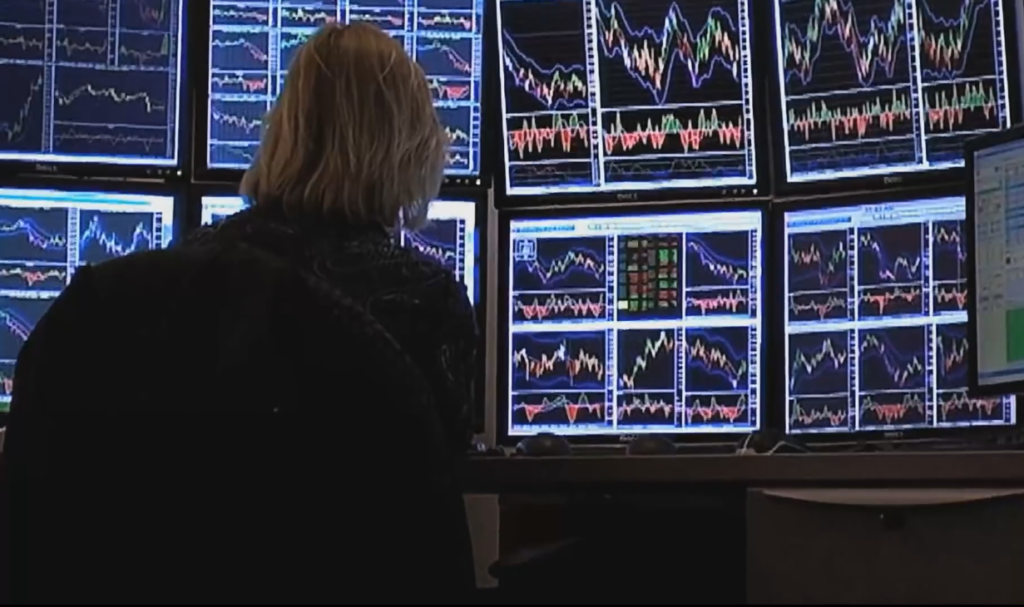
Backwardation happens when the current price of something falls relative to the future price. Commodities can be used as raw materials or inputs to other products or services. Investors can lose their investment if future prices drop too fast. This condition is known as the "Contango Effect."
Contango
The term contango refers to a situation in which the spot and futures prices of a commodity converge. If the futures market price is greater than the spot price, it is called a contango. This happens when there is more demand than supply for the futures contract. The spot and futures prices will go up over time. So, a $75 contract will eventually equal $70.

Traders prefer trading contango to backwardation. Backwardation is when the spot price of the futures contract is higher than the futures. Backwardation can be a profitable strategy for traders who buy futures contracts with the expectation that they will rise. Trader may believe that the demand is lower than anticipated if futures prices drop below the expected price. This is a risky position for traders, so it's best to stick with the trend.
Although "contango" is applicable to futures options, it also applies to commodity futures (ETFs) and leveraged foreign exchange-traded funds. The opposite management mantra may be the case with exchange-traded funds, as they follow the opposite management mantra. It is natural to wonder why someone would choose to invest in an ETF with a different management mantra. However, it is a common practice in futures and options markets.
Traders who seek long-term investments should take into consideration the potential risks associated with market movements in the direction of forward contract prices. If the market moves towards a futures price, then the price of the futures contracts will fall. It will generally equal the spot price for the underlying at maturity. There is a risk that the market may decline. It is possible to see the price graph to determine if a commodity is in a backwardation condition.

A laddering strategy is another option traders use to manage risks. Laddering is one way to hedge futures contracts. This strategy is where one buys the most expensive contracts, while selling the least expensive. Traders are able to minimize their losses in contango, while also reducing the risk of backwardation. It's safer to be safe than sorry. It's important to avoid laddering and be cautious when investing in commodity and leveraged ETFs.
FAQ
What is the difference of a broker versus a financial adviser?
Brokers are individuals who help people and businesses to buy and sell securities and other forms. They handle all paperwork.
Financial advisors can help you make informed decisions about your personal finances. Financial advisors use their knowledge to help clients plan and prepare for financial emergencies and reach their financial goals.
Banks, insurers and other institutions can employ financial advisors. They may also work as independent professionals for a fee.
Consider taking courses in marketing, accounting, or finance to begin a career as a financial advisor. You'll also need to know about the different types of investments available.
What is security in the stock exchange?
Security is an asset which generates income for its owners. Shares in companies is the most common form of security.
Different types of securities can be issued by a company, including bonds, preferred stock, and common stock.
The earnings per shares (EPS) or dividends paid by a company affect the value of a stock.
A share is a piece of the business that you own and you have a claim to future profits. If the company pays a payout, you get money from them.
You can sell shares at any moment.
What is the role and function of the Securities and Exchange Commission
SEC regulates brokerage-dealers, securities exchanges, investment firms, and any other entities involved with the distribution of securities. It also enforces federal securities laws.
How do I invest in the stock market?
You can buy or sell securities through brokers. A broker buys or sells securities for you. Brokerage commissions are charged when you trade securities.
Brokers often charge higher fees than banks. Banks will often offer higher rates, as they don’t make money selling securities.
You must open an account at a bank or broker if you wish to invest in stocks.
If you use a broker, he will tell you how much it costs to buy or sell securities. Based on the amount of each transaction, he will calculate this fee.
Ask your broker questions about:
-
You must deposit a minimum amount to begin trading
-
If you close your position prior to expiration, are there additional charges?
-
What happens to you if more than $5,000 is lost in one day
-
How many days can you maintain positions without paying taxes
-
whether you can borrow against your portfolio
-
Transfer funds between accounts
-
how long it takes to settle transactions
-
The best way to sell or buy securities
-
how to avoid fraud
-
How to get assistance if you are in need
-
If you are able to stop trading at any moment
-
What trades must you report to the government
-
whether you need to file reports with the SEC
-
Do you have to keep records about your transactions?
-
What requirements are there to register with SEC
-
What is registration?
-
How does it affect me?
-
Who must be registered
-
When do I need registration?
Are bonds tradable?
Yes they are. Like shares, bonds can be traded on stock exchanges. They have been for many years now.
The difference between them is the fact that you cannot buy a bonds directly from the issuer. You must go through a broker who buys them on your behalf.
This makes it easier to purchase bonds as there are fewer intermediaries. This also means that if you want to sell a bond, you must find someone willing to buy it from you.
There are many types of bonds. Different bonds pay different interest rates.
Some pay quarterly, while others pay interest each year. These differences make it easy for bonds to be compared.
Bonds can be very helpful when you are looking to invest your money. If you put PS10,000 into a savings account, you'd earn 0.75% per year. If you were to invest the same amount in a 10-year Government Bond, you would get 12.5% interest every year.
If all of these investments were accumulated into a portfolio then the total return over ten year would be higher with the bond investment.
Statistics
- "If all of your money's in one stock, you could potentially lose 50% of it overnight," Moore says. (nerdwallet.com)
- US resident who opens a new IBKR Pro individual or joint account receives a 0.25% rate reduction on margin loans. (nerdwallet.com)
- Individuals with very limited financial experience are either terrified by horror stories of average investors losing 50% of their portfolio value or are beguiled by "hot tips" that bear the promise of huge rewards but seldom pay off. (investopedia.com)
- Even if you find talent for trading stocks, allocating more than 10% of your portfolio to an individual stock can expose your savings to too much volatility. (nerdwallet.com)
External Links
How To
How to Open a Trading Account
Opening a brokerage account is the first step. There are many brokerage firms out there that offer different services. There are many brokers that charge fees and others that don't. Etrade is the most well-known brokerage.
Once your account has been opened, you will need to choose which type of account to open. You can choose from these options:
-
Individual Retirement Accounts (IRAs).
-
Roth Individual Retirement Accounts
-
401(k)s
-
403(b)s
-
SIMPLE IRAs
-
SEP IRAs
-
SIMPLE SIMPLE401(k)s
Each option has its own benefits. IRA accounts provide tax advantages, however they are more complex than other options. Roth IRAs allow investors deductions from their taxable income. However, they can't be used to withdraw funds. SIMPLE IRAs are similar to SEP IRAs except that they can be funded with matching funds from employers. SIMPLE IRAs are very simple and easy to set up. They enable employees to contribute before taxes and allow employers to match their contributions.
Finally, determine how much capital you would like to invest. This is your initial deposit. Most brokers will give you a range of deposits based on your desired return. Based on your desired return, you could receive between $5,000 and $10,000. The lower end of this range represents a conservative approach, and the upper end represents a risky approach.
You must decide what type of account to open. Next, you must decide how much money you wish to invest. You must invest a minimum amount with each broker. The minimum amounts you must invest vary among brokers. Make sure to check with each broker.
Once you have decided on the type of account you would like and how much money you wish to invest, it is time to choose a broker. You should look at the following factors before selecting a broker:
-
Fees: Make sure your fees are clear and fair. Brokers will often offer rebates or free trades to cover up fees. Some brokers will increase their fees once you have made your first trade. Be cautious of brokers who try to scam you into paying additional fees.
-
Customer service: Look out for customer service representatives with knowledge about the product and who can answer questions quickly.
-
Security - Look for a broker who offers security features like multi-signature technology or two-factor authentication.
-
Mobile apps - Check if the broker offers mobile apps that let you access your portfolio anywhere via your smartphone.
-
Social media presence – Find out if your broker is active on social media. It may be time to move on if they don’t.
-
Technology - Does the broker utilize cutting-edge technology Is the trading platform easy to use? Are there any issues with the system?
Once you have selected a broker to work with, you need an account. Some brokers offer free trials while others require you to pay a fee. After signing up, you will need to confirm email address, phone number and password. Then, you'll be asked to provide personal information such as your name, date of birth, and social security number. The last step is to provide proof of identification in order to confirm your identity.
After you have been verified, you will start receiving emails from your brokerage firm. It's important to read these emails carefully because they contain important information about your account. These emails will inform you about the assets that you can sell and which types of transactions you have available. You also learn the fees involved. Keep track of any promotions your broker offers. These could be referral bonuses, contests or even free trades.
Next is opening an online account. An online account can be opened through TradeStation or Interactive Brokers. These websites are excellent resources for beginners. When opening an account, you'll typically need to provide your full name, address, phone number, email address, and other identifying information. After this information has been submitted, you will be given an activation number. This code is used to log into your account and complete this process.
Once you have opened a new account, you are ready to start investing.